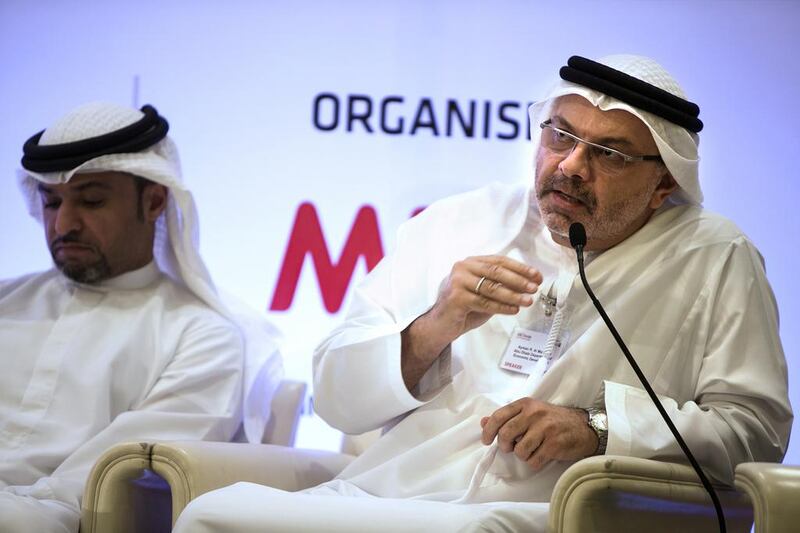The chief of Abu Dhabi’s new Industrial Development Bureau (IDB) has cast doubt on the emirate’s target for sourcing almost a quarter of its GDP by 2030 from industry.
Ayman Al Makkawy, the director general of the Abu Dhabi Government agency, was speaking yesterday a month after the bureau was set up to help to manage investment in the industrial sector.
“Where we are today comparing it to the original targets is simply – I don’t want to say impossible – but it’s very difficult to achieve,” said Mr Al Makkawy on the sidelines of the Abu Dhabi Conference.
“The original targets were set and [since then] the world has changed.”
Industry is at the heart of the emirate's goal to diversify its economy away from oil, partly thanks to access to an abundance of energy supplies. Officials set a target of 24 per cent of output by 2030 coming from industry under its 2030 Economic Vision.
Last year, 5.9 per cent of the emirate’s growth was driven by industry, up from 5.6 per cent in 2010.
But since the plan was drawn up in 2007, the outlook for global industrial investment has sagged, dragged down by weaker demand for goods in both developed and emerging markets as growth has cooled.
The ripples from the global financial crisis of 2009 have prompted officials to review some targets set out under the 2030 plan. Amer Al Hammadi, the executive director for planning and infrastructure at the Urban Planning Council, said yesterday five-year forecasts of population and employment growth were “under study”.
“I understand there are [is] now new fresh look at original targets of the 2030 plan,” said Mr Al Makkaway.
“We are now starting as IBD to contribute to this vision and progress, yet we have to be realistic about what we’re going to achieve.”
Billions of dollars of investment has been earmarked for Khalifa Industrial Zone Abu Dhabi (Kizad), the industrial park planned to eventually fill an area of land two-thirds the size of Singapore. Its biggest tenant, Emirates Global Aluminium, will become the fifth-largest aluminium company by production on the completion of phase two of its expansion next year.
“The strengthening investment in 2013 and expectation for the medium term should be positive for raising Abu Dhabi’s industrial output and helping to diversify the economy,” said Monica Malik, the chief economist of the private bank EFG-Hermes.
But officials are keen to link big upstream players like EGA and Emirates Steel with smaller downstream producers to help to broaden the value of exports.
At the moment, Mr Al Makkawy said most upstream industries were dominated by small companies producing low-tech goods.
“The big players, in particular government-owned, now need to have in mind and look into the future about products … to allow for the growth of tertiary and secondary industries, the smaller entrepreneurs,” he said.
Mr Al Makkawy said he was also considering how to deepen research and development (R&D) spending. Estimates show the emirate spends 0.6 per cent of its GDP on R&D, a figure that is expected to rise as companies such as Mubadala, the investment vehicle controlled by the Abu Dhabi Government, pump more cash into research.
The IDB has also been told by the government to carefully review new projects requiring natural gas, including their suitability for Abu Dhabi and how much gas they would require.
The 2030 Economic Vision aims for annual growth in the industrial sector of 9 per cent.
tarnold@thenational.ae





